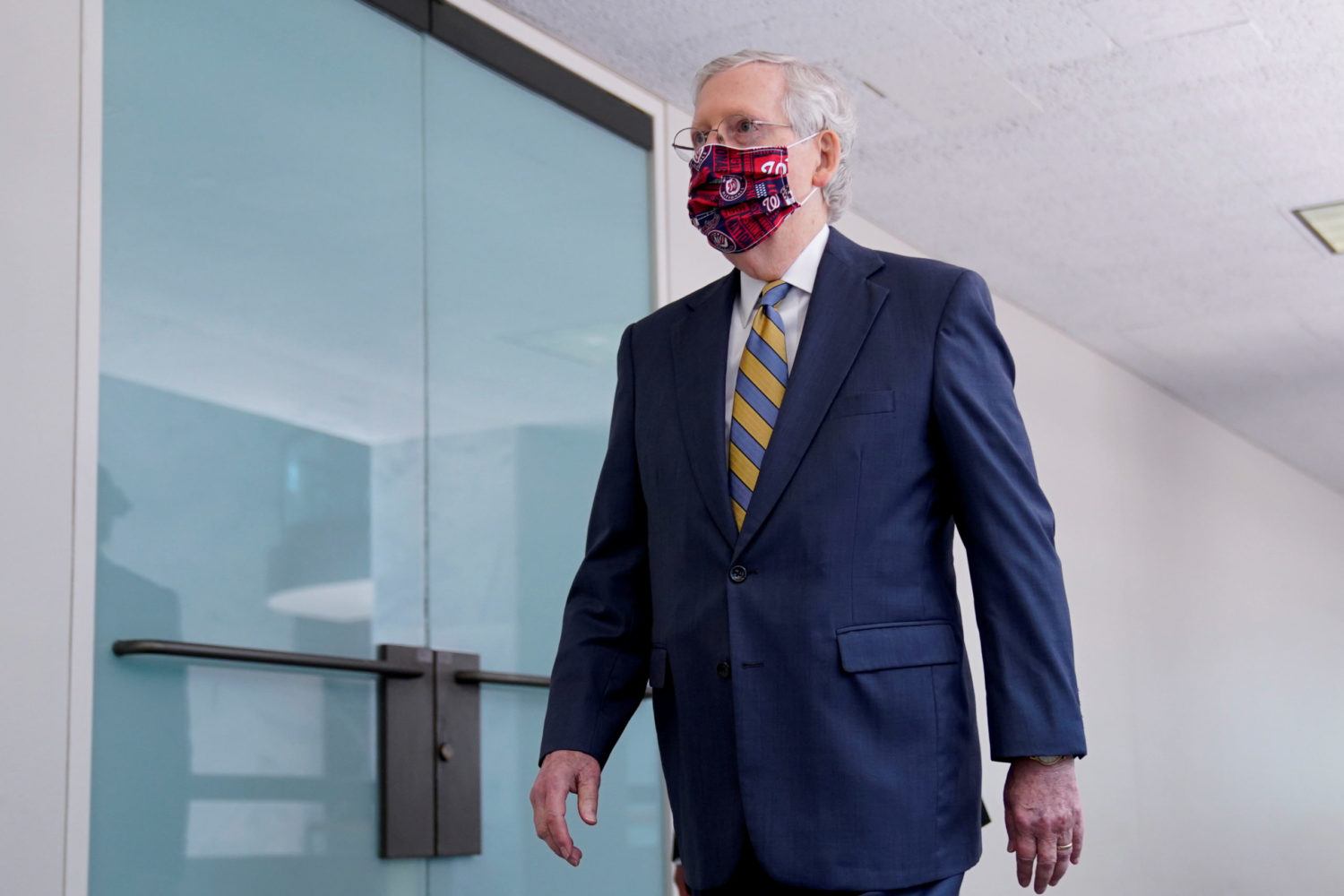
By Lucia Mutikani
WASHINGTON (Reuters) -U.S. factory activity accelerated to its highest level in nearly 2-1/2 years in December as the coronavirus pandemic continues to pull demand away from services towards goods, though spiraling new infections are causing bottlenecks in supply chains.
The strength in manufacturing reported by the Institute for Supply Management (ISM) on Tuesday likely helped to soften the blow on the economy in the fourth quarter from the relentless spread of COVID-19 and government delays in approving another rescue package to help businesses and the unemployed.
The ISM said the virus was “limiting manufacturing growth potential” because of absenteeism and short-term shutdowns to sanitize facilities at factories and their suppliers.
“U.S. manufacturing should fare reasonably well this winter as businesses need to restock inventories and the shift in consumer spending away from services to goods helps manufacturers,” said Ryan Sweet, a senior economist at Moody’s Analytics in West Chester, Pennsylvania.
The ISM’s index of national factory activity rebounded to a reading of 60.7 last month. That was the highest level since August 2018 and followed a reading of 57.5 in November. A reading above 50 indicates expansion in manufacturing, which accounts for 11.9% of the U.S. economy. Economists polled by Reuters had forecast the index would slip to 56.6 in December.
But some of the surprise rebound in the ISM index was due to an increase in the survey’s measure of supplier deliveries to a reading of 67.6 last month from 61.7 in November.
A lengthening in suppliers’ delivery times is normally associated with a strong economy and increased customer demand, which would be a positive contribution. But in this case slower supplier deliveries also indicate supply shortages related to the pandemic.
Nevertheless, demand for manufactured goods has been strong as the resurgence in new COVID-19 cases has led to fresh business restrictions across the United States, largely impacting the vast services sector.
A large section of the population continues to work and take classes at home, fueling a scramble for electronics, home improvement products and other goods like exercise equipment.
Computer and electronic products manufacturers said they continued to have “tailwinds from the COVID-19 pandemic research support for vaccines and treatments,” adding that “business picked up for us in the last month.”
Makers of miscellaneous products said “sales are now exceeding pre-COVID-19 levels.” Electrical equipment, appliances and components producers reported that business was stronger than expected, “with higher demand for many products.”
Despite strong demand, manufacturing output is still about 3.8% below its pre-pandemic level, according to the Federal Reserve. That could persist for a while as the new wave of infections causes disruptions to labor and the supply chain.
Food manufacturers complained the virus was “affecting us more strongly now than back in March.” Similar sentiments were echoed by transportation equipment makers who said the outbreaks were constraining suppliers. Plastics and rubber products also reported that their suppliers were having difficulty finding and retaining labor.
STRONG ORDERS GROWTH
The ISM report followed on the heels of data on Monday showing strong construction spending in November and October. Strength in the two sectors supports economists’ predictions that the economy grew at around a 5% annualized rate in the fourth quarter after a record 33.4% pace in the third quarter.
The manufacturing boost to gross domestic product would come through an accumulation of inventory by businesses.
The virus and depleted government pandemic money took a bite out of consumer spending in November. More than $3 trillion in government pandemic relief fueled growth in the July-September quarter after the economy contracted at a historic 31.4% rate in the second quarter. Nearly $900 billion in fiscal stimulus was approved in late December.
The ISM’s forward-looking new orders sub-index rose to a reading of 67.9 last month from 65.1 in November. Strong orders growth boosted manufacturing employment, which had contracted in November. The ISM’s manufacturing employment gauge rebounded to 51.5 from a reading of 48.4 in November.
But the supply chain gridlock is driving up costs for manufacturers. The survey’s prices paid index jumped to a reading of 77.6 last month, the highest since May 2018, from 65.4 in November. That raises the risk of higher inflation this year, though high unemployment could limit price pressures.
The labor market has lost steam in tandem with the economy since job growth peaked at a record 4.781 million in June.
According to an early Reuters survey of economists, nonfarm payrolls probably increased by 100,000 jobs last month after rising by 245,000 in November. That would mean the economy recouped about 12.5 million of the 22.2 million jobs lost in March and April. The government is scheduled to publish December’s employment report on Friday.
(Reporting by Lucia MutikaniEditing by Chizu Nomiyama and Paul Simao)











